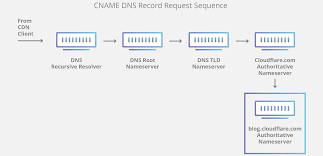In this article, you will discover about what is a domain name and a DNS.
First and foremost,
What is a Domain Name?
A Domain name is an identifier string that identifiers within the internet a domain of administrative autonomy, authority, or power.
- Domain name is used in different networking contexts and for application-specific naming and addressing purposes.
- Generally, a Domain name defines a network domain or describes an Internet Protocol (IP) resource, such as a personal computer used to access the Internet, a website hosting server or a website itself or some other internet-based service.
- Examples : .com , .net , .edu , .org etc.

What is a DNS?
The DNS (Domain Name System) is like a phonebook of the Internet. We all can access information online through domain names, like google.com or casbay.com. The web browsers interact through Internet Protocol (IP) addresses. DNS translates domain names to IP addresses so that the browsers can help us to load Internet resources.
Furthermore, each device that we connect to the Internet has a unique IP address. This allows other machines to use to find the device. With DNS servers, there is no need to memorize IP addresses such as 172.16.254.1 (in IPv4), or more complex newer alphanumeric IP addresses such as 2001:0db8:85a3:0000:0000:8a2e:0370:7334(in IPv6).
How does it work?
The process of DNS resolution involves converting a hostname (such as www.casbay.com) into a computer-friendly IP address (such as 192.178.1.1). Each device is given a specific IP address on the Internet. This address is necessary to find the appropriate Internet device. An IP address is like a street address that we use to find a particular home. When loading a webpage, a translation will occur between what a user types into their web browser (casbay.com) and the machine-friendly address necessary to locate the casbay.com webpage.
In order to understand the process of DNS resolution, it is first necessary to learn about the different hardware components a DNS query must pass between. For the web browser, the DNS lookup occurs “ behind the scenes”. This requires no interaction from the user’s computer apart from the initial request.

The 4 DNS servers involved during the process of loading a webpage:
DNS recursor
- DNS recursor is a server for receiving queries from client machines through applications. For example, web browsers. Typically the recursor is responsible to make the additional requests. It can be used to satisfy the client’s DNS query.
Root nameserver
- Root server is the first step in the process to translate (resolve) human-readable host names into IP addresses. Typically it serves as a reference to other more specific locations.
TLD nameserver
- top level domain server (TLD) is the next step in the search for a specific IP address, and it hosts the last portion of a hostname (In casbay.com, the TLD server is “com”).
Authoritative nameserver
- This final nameserver helps to transalte each specific name into its definition. The authoritative nameserver is the final step in the nameserver query. If the authoritative name server has access to the record that we request, it will return the IP address for the requested hostname back to the DNS Recursor that made the initial request.


